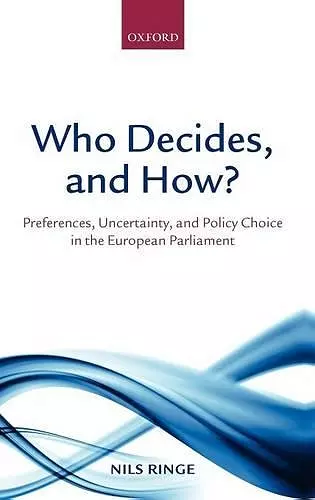Who Decides, and How?
Preferences, Uncertainty, and Policy Choice in the European Parliament
Format:Hardback
Publisher:Oxford University Press
Published:8th Oct '09
Currently unavailable, and unfortunately no date known when it will be back

How do individual legislators in the European Parliament (EP) make decisions on the wide variety of policy proposals they routinely confront? Despite a flourishing literature on the European Union's only directly elected institution, we know surprisingly little about the micro-foundations of EP politics. Who Decides, and How? seeks to address this shortcoming by examining how individual legislators make policy choices, how these choices are aggregated, and what role parties and committees play in this process. It argues that members of the EP lack adequate resources to make equally informed decisions across policy areas. Therefore, when faced with policy choices in policy areas outside their realms of expertise, members make decisions on the basis of perceived preference coherence: they adopt the positions of their expert colleagues in the responsible EP committee whose preferences over policy outcomes they believe to most closely match their own. These preferences are difficult to determine, however, which is why legislators rely on a shared party label as a stand-in for common preferences. This results in cohesive parties, despite the inability of EP parties to discipline their members. Who Decides, and How? relies on the respective strengths of quantitative and qualitative data to shed new light on the inner workings of the EP. It illustrates how legislators make broadly representative decisions under conditions of resource scarcity, informational uncertainty, and problematic policy preferences, and how structurally weak EP parties can act in an internally cohesive and externally competitive manner when carrying out their policy commitments to Europe's citizens.
ISBN: 9780199572557
Dimensions: 241mm x 162mm x 20mm
Weight: 545g
250 pages